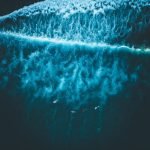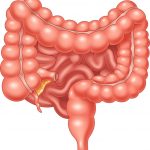SIBO and Skin Disease Part 1
Michael Traub, ND, DHANP, FABNO
Tolle Causam
The comorbidity of skin disease and gastrointestinal (GI) disorders has long been recognized. In recent years, small intestinal bacterial overgrowth (SIBO) has been identified as an underlying problem in the majority of patients diagnosed with irritable bowel syndrome (IBS). It has been estimated that 10-20% of the population in the United States suffer from IBS, and that 84% of IBS patients have SIBO.1 This 2-part article will review the current evidence basis for SIBO as a comorbid and contributory factor in several common skin diseases. Part 1 will explore the connection between SIBO and rosacea and acne. The evidence for a link between SIBO, rosacea, and acne is stronger than for any other skin conditions.
Part 2 of this article will cover SIBO and atopic dermatitis, urticaria, psoriasis, and systemic sclerosis.
Rosacea
Rosacea trigger factors are myriad including dietary; however, an association with GI disorders such as IBS is also very plausible. SIBO can explain many cases of IBS, and in 2 studies treatment of SIBO was shown to improve rosacea. The prevalence of SIBO in rosacea patient populations has been found to range from 46% to 66%.2-4
In an Italian study of 113 consecutive rosacea patients and 60 controls, 52 of the 113 patients were found to have positive lactulose breath tests (LBT) for SIBO (as compared with 3 of 60 controls).3 Subjects were randomized and blinded and treated with rifaximin (1200 mg/d) (n=32) or placebo (n=20) for 10 days. Treatment normalized the LBT in 28/32 patients; 71% showed clearance of their rosacea, and 21% showed marked improvement. Their GI symptoms also decreased. Of those given placebo, 2/20 had their rosacea worsen, and the rest showed no change. When placebo-treated subjects were crossed over to treatment with rifaximin, 17/20 experienced a normalization of their LBT, and 15/17 had their rosacea clear. Thus, 45/52 patients experienced total eradication of rosacea using rifaximin. Improvement was maintained at 9 months in 96%. Two patients with recurrence were cleared with re-treatment.3
Similarly, a double-blind, controlled study showed that after SIBO eradication with antibiotic treatment, 71% of patients (28/32) had complete clearance of rosacea.2 In contrast, patients treated with placebo had no change in rosacea symptoms or had a worsening of symptoms. Once the placebo patients were treated with antibiotic therapy, 75% of patients experienced a resolution of rosacea symptoms.2
These studies demonstrate that rosacea patients often have a significantly higher SIBO prevalence than non-rosacea patients and that in a majority of patients, treatment and eradication of SIBO can significantly reduce rosacea symptoms.
Acne
Over 75 years have passed since dermatologists John Stokes and Donald Pillsbury proposed a gastrointestinal mechanism for the overlap between depression, anxiety, and skin conditions such as acne.5
They hypothesized that emotional states might alter the normal intestinal microbiota, increase intestinal permeability, and contribute to systemic inflammation.5 Among the remedies advocated by Stokes and Pillsbury were Lactobacillus acidophilus cultures. Citing research showing that as many as 40% of individuals with acne have hypochlorhydria, Stokes and Pillsbury hypothesized that less than adequate stomach acid would set the stage for migration of bacteria from the colon towards the distal portions of the small intestine, as well as an alteration of normal intestinal microflora. Many aspects of this gut-brain-skin unifying theory have recently been validated.6 The role of the intestinal microbiome, as well as oral probiotics to mediate systemic inflammation, oxidative stress, glycemic control, tissue lipid content and even mood, have important implications in acne.
Acne patients are at higher risk for GI distress. One study of more than 13 000 adolescents with acne showed they were also more likely to experience GI symptoms such as halitosis, gastric reflux, bloating, and constipation.7
In recent years it has been confirmed that hypochlorhydria is a significant risk factor for SIBO. Indeed, SIBO is detected via hydrogen breath testing in half of patients on long-term proton pump inhibitor treatment.8
Just as Stokes and Pillsbury had supposed, SIBO has recently been shown to be associated with increased intestinal permeability, whereas antimicrobial treatment of SIBO helps to restore the normal intestinal barrier.9 Experimental studies reveal that psychological stress stagnates normal small intestinal transit time, encourages overgrowth of bacteria, and compromises the intestinal barrier.10 SIBO is strongly associated with depression and anxiety, whereas eradication of SIBO improves emotional symptoms.11 Oral administration of probiotics has also proven beneficial in the reduction of SIBO.12
The Role of Diet
Interestingly, the omega-3 fatty acid-rich cod liver oil advocated by Stokes and Pillsbury may have been ahead of its scientific time. Not only has an omega-3-deficient diet been shown to increase SIBO in animals,13 it has been linked in multiple human studies to an increased risk of depressive symptoms.14 A small series of case reports indicate the value of omega-3 fatty acids in both the clinical grade of acne and global aspects of well-being.15
In recent years it has become evident that there may be a connection between the risk of acne and dietary components, most notably low-fiber carbohydrates. For example, regional diets low in processed foods and sugars (with an overall low glycemic load) are associated with decreased acne risk.16 Intervention studies using similar low glycemic load meals have reported improvements in acne vulgaris.17
Of 3 large population studies linking dairy consumption (most notably skim milk) and acne, none found a positive correlation between fermented dairy (eg, yogurt) and acne.18-20 It has been suggested that milk consumption is associated with acne because it contains growth hormones (both synthetically added and naturally occurring.21 Acne is driven by insulin-like growth factor 1 (IGF-1),22 and IGF-1 can be absorbed across colonic tissue.23 It is interesting to note that probiotic bacteria (lactobacilli, in particular) utilize IGF-1 during the fermentation process when added to milk, with a resultant 4-fold lower level of IGF-1 in fermented vs skim milk.24 If intestinal permeability is increased in acne, the intestinal absorption of IGF-1 would likely be enhanced in general, and more specifically when milk (rather than fermented dairy) is orally consumed.
Summary
The scientist and philosopher, Goethe, is quoted as saying, “Everything has been thought of before, but the difficulty is to think of it again.” Based on a review of the original hypotheses of Stokes, Pillsbury, and their peers, it seems that many of the recent investigations in the area of the gut-brain-skin axis, in the broad sense, have been thought of before. The difference is the degree of scientific sophistication, which now enables us to see an undeniable link between these major organ systems.
The lines of communication, as mediated by gut microbes, may be direct and indirect – ultimately influencing the degree of acne via a systemic effect on inflammation, oxidative stress, glycemic control, tissue lipid levels, pathogenic bacteria, and levels of neuropeptides and mood-regulating neurotransmitters. It was not the contention of Stokes and Pillsbury that acne is a disease of the gastrointestinal tract. Yet, there appears to be more than enough supportive evidence to suggest that gut microbes, and the integrity of the GI tract itself, are contributing factors in the acne process.
The comorbidity of SIBO with atopic dermatitis, urticaria, psoriasis and systemic sclerosis will be reviewed in Part 2 of this article, to be published in the next issue of NDNR.
References:
- Pimentel M. A New IBS Solution: Bacteria – The Missing Link in Treating Irritable Bowel Syndrome. Sherman Oaks, CA: Health Point Press; 2011.
- Weinstock LB, Steinhoff M. Rosacea and small intestinal bacterial overgrowth: prevalence and response to rifaximin. J Am Acad Dermatol. 2013;68(5):875-876.
- Parodi A, Paolino S, Greco A, et al. Small intestinal bacterial overgrowth in rosacea: clinical effectiveness of its eradication. Clin Gastroenterol Hepatol. 2008;6(7):759-764.
- Weinstock L. EMR review of records, 2008-2013. Referenced in: Rosacea and GI Disorders: Inflammation and Dysbiosis [PowerPoint presentation].
- Stokes JH, Pillsbury DM. The effect on the skin of emotional and nervous states: theoretical and practical consideration of a gastrointestinal mechanism. Arch Derm Syphilol. 1930;22(6):962-993.
- Bowe WP, Logan AC. Acne vulgaris, probiotics and the gut-brain-skin axis – back to the future? Gut Pathog. 2011;3(1):1.
- Zhang H, Liao W, Chao W, et al. Risk factors for sebaceous gland diseases and their relationship to gastrointestinal dysfunction in Han adolescents. J Dermatol. 2008;35(9):555-561.
- Lombardo L, Foti M, Ruggia O, Chiecchio A. Increased incidence of small intestinal bacterial overgrowth during proton pump inhibitor therapy. Clin Gastroenterol Hepatol. 2010;8(6):504-508.
- Lauritano EC, Valenza V, Sparano L, et al. Small intestinal bacterial overgrowth and intestinal permeability. Scand J Gastroenterol. 2010;45(9):1131-1132.
- Wang SX, Wu WC. Effects of psychological stress on small intestinal motility and bacteria and mucosa in mice. World J Gastroenterol. 2005;11(13):2016-2021.
- Pimentel M, Hallegua D, Chow EJ, et al. Eradication of small intestinal bacterial overgrowth decreases symptoms in chronic fatigue syndrome: a double blind, randomized study. Gastroenterology. 2000;118(4):A414.
- Barrett JS, Canale KE, Gearry RB, et al. Probiotic effects on intestinal fermentation patterns in patients with irritable bowel syndrome. World J Gastroenterol. 2008;14(32):5020-5024.
- Ralph HJ, Volker DH, Chin J. Effects of omega-3 fatty acid deficiency on rat intestinal structure and microbiology. Asia Pac J Clin Nutr. 2004;13(Suppl):S79.
- Freeman MP. Omega-3 fatty acids in major depressive disorder. J Clin Psychiatry. 2009;70 Suppl 5:7-11.
- Rubin MG, Kim K, Logan AC. Acne vulgaris, mental health and omega-3 fatty acids: a report of cases. Lipids Health Dis. 2008;7:36.
- Bowe WP, Joshi SS, Shalita AR. Diet and acne. J Am Acad Dermatol. 2010;63(1):124-141.
- Smith RN, Mann NJ, Braue A, et al. A low-glycemic load diet improves symptoms in acne vulgaris patients: a randomized controlled trial. Am J Clin Nutr. 2007;86(1):107-115.
- Adebamowo CA, Spiegelman D, Berkey CS, et al. Milk consumption and acne in teenaged boys. J Am Acad Dermatol. 2008;58(5):787-793.
- Adebamowo CA, Spiegelman D, Berkey CS, et al. Milk consumption and acne in adolescent girls. Dermatol Online J. 2006;12(4):1.
- Adebamowo CA, Spiegelman D, Danby FW, et al. High school dietary intake and teenage acne. J Am Acad Dermatol. 2005;52(2):207-214.
- Melnik BC, Schmitz G. Role of insulin, insulin-like growth factor-1, hyperglycaemic food and milk consumption in the pathogenesis of acne vulgaris. Exp Dermatol. 2009;18(10):833-841.
- Ben-Amitai D, Laron Z. Effect of insulin-like growth factor-1 deficiency or administration on the occurrence of acne. J Eur Acad Dermatol Venereol. 2011;25(8):950-954.
- Quadros E, Landzert NM, LeRoy S, et al. Colonic absorption of insulin-like growth factor I in vitro. Pharm Res. 1994;11(2):226-230.
- Kang SH, Kim JU, Imm JY, et al. The effects of dairy processes and storage on insulin-like growth factor-I (IGF-I) content in milk and in model IGF-I-fortified dairy products. J Dairy Sci. 2006;89(2):402-409.
 Michael Traub, ND, DHANP, FABNO, was inspired by his dermatologist father to become the leading expert in dermatology in the naturopathic profession. Dr Traub has taught dermatology at 5 of the 7 accredited naturopathic medical schools in North America and is the author of the textbook Essentials of Dermatologic Diagnosis and Integrative Therapeutics. He has been medical director of Lokahi Health Center in Kailua Kona, HI, for the past 32 years. He has also been actively engaged in clinical research throughout most of his career. Dr Traub’s most recent investigation is the “Efficacy and Safety of Kamedis Eczema Treatment in Children and Adults with Atopic Dermatitis.”
Michael Traub, ND, DHANP, FABNO, was inspired by his dermatologist father to become the leading expert in dermatology in the naturopathic profession. Dr Traub has taught dermatology at 5 of the 7 accredited naturopathic medical schools in North America and is the author of the textbook Essentials of Dermatologic Diagnosis and Integrative Therapeutics. He has been medical director of Lokahi Health Center in Kailua Kona, HI, for the past 32 years. He has also been actively engaged in clinical research throughout most of his career. Dr Traub’s most recent investigation is the “Efficacy and Safety of Kamedis Eczema Treatment in Children and Adults with Atopic Dermatitis.”









